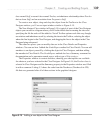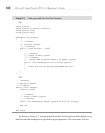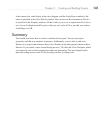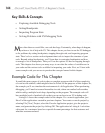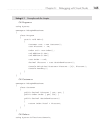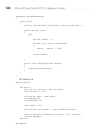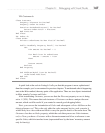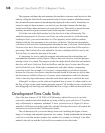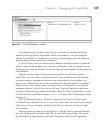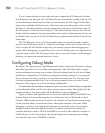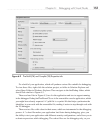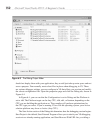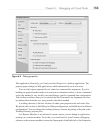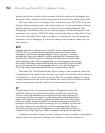
Chapter 6: Debugging with Visual Studio 147
VB: Customer.vb
Class Customer
Property Discount As Decimal
Property Order As Order
Function GetOrderDiscount() As Decimal
Return Order.Total * Discount
End Function
End Class
VB: Order.vb
Class Order
Private orderItems As New List(Of Decimal)
Public ReadOnly Property Total() As Decimal
Get
Dim amount As Decimal = 0
For Each item In orderItems
amount = amount + item
Next
Return amount
End Get
End Property
Sub AddItem(ByVal item As Decimal)
orderItems.Add(item)
End Sub
End Class
A quick look at the code in Listing 6-1 tells you that this program is more sophisticated
than the examples you’ve encountered in previous chapters. To understand what is happening,
start at the Main method, the entry point of the application. There are two objects instantiated
in Main, namely Customer and Order.
After instantiating Customer, you can see that the Discount property on cust is being
set to .1 (10%). This means that each instance of Customer can have a unique discount
amount, which could be useful if you wanted to reward good shopping habits.
Next, you can see the instantiation of Order and subsequent calls to AddItem on the
object reference ord. This code only adds the order amount, but in a real scenario it
would likely be a class with more fields to carry the specific details of the order item. The
Customer class has an Order property, which the code then passes our Order instance,
ord, to. Now, you have a Customer with a discount amount and it has a reference to our
specific Order, which in turn has items (represented here by the items’ monetary amount
only for brevity).



